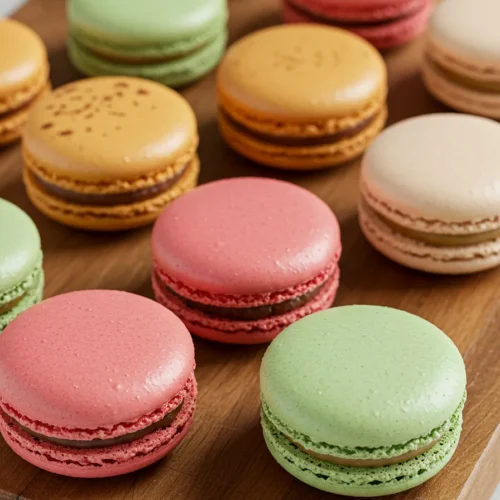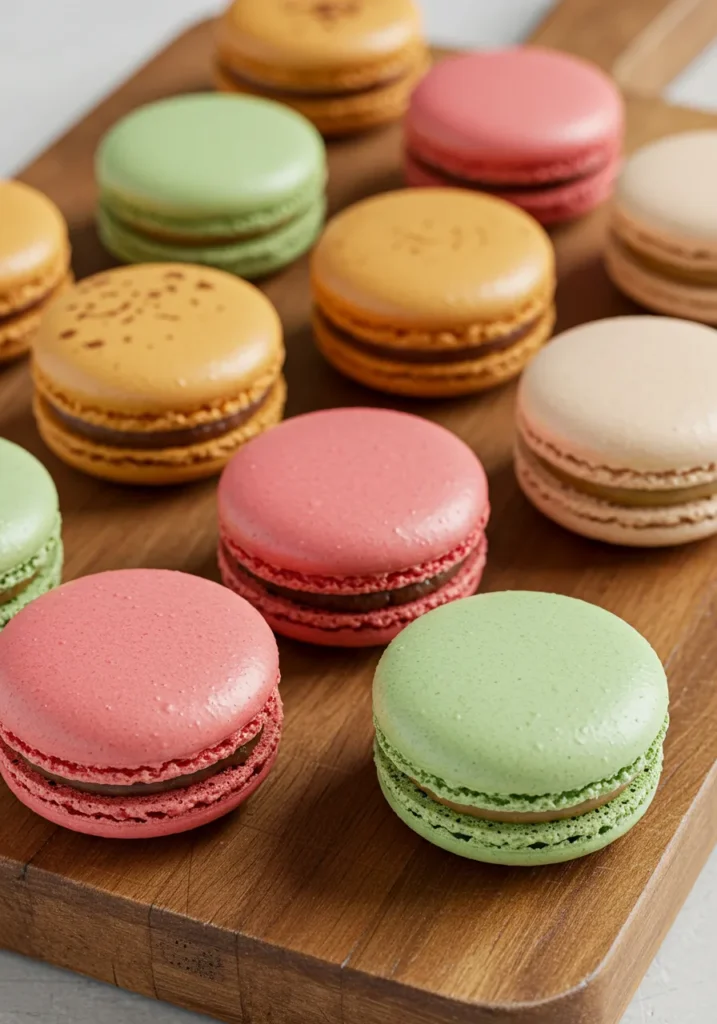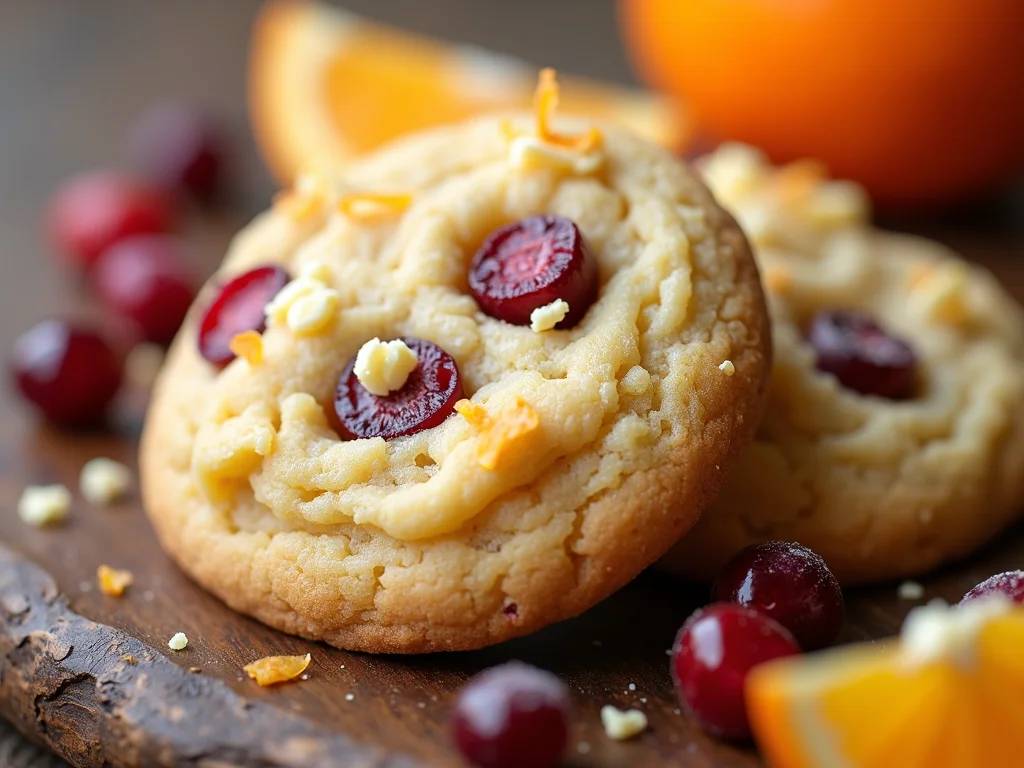So you’ve been scrolling Instagram, drooling over those colorful, delicate little cookies that somehow look too perfect to eat? Yeah, same. I remember the first time I tried making French macarons—let’s just say my kitchen looked like a meringue murder scene. But don’t worry: I’ve cracked the code to foolproof French macarons, and I’m here to share all the secrets (and some brutal truths) with you.
If you’ve been terrified of even attempting these, stick around. Not only are they totally doable, they’re also kind of addictive to make. Ready to whip up some magic? Let’s roll.
Why Are French Macarons So… Extra?
Okay, let’s address the elephant in the room: why are macarons such divas?
These little guys are sensitive to humidity, temperature, and even your mood (just kidding… kind of). But once you understand the science and technique, you’ll actually find them relaxing to make. Sort of like therapy, but tastier and cheaper.
What makes macarons tricky?
- They’re meringue-based, which means your egg whites need to be whipped to the right stiffness.
- The batter consistency (a.k.a. “macaronage”) is everything—too runny, and they’ll flop. Too stiff, and they’ll crack.
- Resting time matters. You need to let them dry before baking to form that iconic “skin.”
But hey—if I can figure it out after three failed batches (and some colorful language), so can you.
The Tools You Need for Foolproof French Macarons
Before we dive into the recipe, here’s a hot tip: having the right tools makes this process 10x easier.
Must-haves:
- Kitchen scale (seriously, ditch the measuring cups for this one)
- Stand mixer or electric hand mixer (unless you enjoy arm day)
- Fine mesh sieve (to sift those pesky almond lumps)
- Silicone baking mats or parchment paper
- Piping bag with a round tip
If you’re tempted to skip the scale and “eyeball” it… well, good luck. 😉 Macarons are not forgiving in that department.
Foolproof French Macarons Recipe
Alright, here’s the main event. Follow these steps and you’ll have bakery-worthy macarons in no time.
Ingredients:
- 100g egg whites, at room temperature (about 3 large eggs)
- 100g granulated sugar
- 100g almond flour (finely ground)
- 130g powdered sugar
- Food coloring gel (optional, but fun)
Filling Ideas:
- Buttercream
- Ganache
- Jam (FYI: avoid runny ones that can make the shells soggy)
Step-by-Step Instructions
Step 1: Prep Like a Pro
Line your baking sheets with silicone mats or parchment. Sift almond flour and powdered sugar together into a bowl—do it twice if you’re feeling fancy. This keeps the shells smooth.
Step 2: Make That Meringue
Whip egg whites in a clean, grease-free bowl. When they’re foamy, slowly add the granulated sugar. Keep whipping until you get stiff, glossy peaks. If you can turn the bowl upside down without anything falling out, you’re golden.
Step 3: Macaronage (The Scary Part)
Add your sifted almond flour/powdered sugar to the meringue. Gently fold it in using a spatula. You’re aiming for a thick, lava-like batter that slowly ribbons off the spatula. If it’s flowing like pancake batter, you’ve gone too far.
Pro tip: After 40–50 folds, start testing the consistency every few folds.
Step 4: Pipe & Rest
Transfer the batter into a piping bag fitted with a round tip. Pipe small circles (about 1.5 inches) onto your lined tray. Give the tray a couple of hard taps on the counter to pop air bubbles.
Here’s the patience part: let them sit at room temperature for 30–60 minutes until they develop a skin. You should be able to touch them lightly without batter sticking to your finger.
Step 5: Bake & Cool
Bake at 300°F (150°C) for about 15–18 minutes. The feet should form (that cute ruffle at the bottom), and they should come off the mat cleanly once cooled.
Step 6: Fill & Chill
Pair up your shells by size, pipe your chosen filling onto one shell, and sandwich them together. Let them rest in the fridge for a few hours to “mature” for the best texture.
Common Mistakes (And How To Avoid Them)
Been there, done that. Let me save you from these classic macaron mishaps.
- Cracked shells? You probably didn’t let them dry long enough, or your oven was too hot.
- Hollow shells? Over-whipped meringue or over-mixed batter.
- No feet? Batter too wet or under-mixed.
- Sticky bottoms? Underbaked.
And if your first batch still looks more like alien spaceships than French pastries—don’t stress. Even the wonky ones taste good. 🙂
Pro Tips to Nail It Every Time
Temperature Matters
Use an oven thermometer to make sure your oven isn’t lying to you (spoiler: it usually is).
Age Your Egg Whites
Some swear by aging egg whites (letting them sit covered in the fridge for a day). IMO, it does help stabilize the meringue a bit, but it’s not mandatory.
Humidity Is the Enemy
Macarons hate moisture. If it’s a rainy day, maybe just binge Netflix instead and try tomorrow.
Fun Flavor Combos to Try
Once you master the basics, go wild with flavors! Here are some of my faves:
- Salted caramel with dark chocolate ganache (chef’s kiss)
- Raspberry shells with lemon buttercream
- Matcha shells with white chocolate filling
- Lavender shells with honey cream
Pro tip: Always keep the shells mildly flavored and let the filling shine.
Why I Love Making Macarons
Honestly? Because nothing beats the feeling of pulling a perfect tray of macarons out of the oven. You’ll feel like a culinary wizard. Plus, people think you’re some kind of fancy pastry chef when you show up with these at a party. 😉
And hey, if you mess up a batch… they still taste better than 99% of store-bought cookies.
FAQs About Foolproof French Macarons
Are macarons the same as macaroons?
Nope. Totally different. Macarons = French, delicate, almond-based. Macaroons = chewy coconut blobs your grandma makes. Both delicious, but not the same.
How long do they last?
Stored in an airtight container in the fridge, they’re good for about a week. You can also freeze them (shells only) for up to a month.
Can I use liquid food coloring?
Nah. Stick to gel or powdered coloring to avoid messing up the batter.
Why This Recipe Actually Works
I’ve tested countless macaron recipes, and many of them assume you’ve trained at Le Cordon Bleu or something. This recipe cuts through the noise and focuses on what actually matters:
- Accurate measurements
- Proper technique (especially macaronage!)
- Patience during resting and baking
If you follow these steps, I promise you’ll get macarons that look and taste legit—even if your first few aren’t picture-perfect.
Related Recipes
Final Thoughts about Foolproof French Macarons
So, are you ready to conquer French macarons and impress everyone (including yourself)? Remember: even if they don’t come out flawless on your first try, you’re learning—and eating the evidence is the best part anyway. 😉
If I can go from pancake-flat macarons to gorgeous, puffy little gems with perfect feet, then trust me, you can too.
Now go grab those eggs, crank up your mixer, and show those French cookies who’s boss.
And if anyone asks if making macarons is hard? Just smile and say, “Oh, not at all,” while secretly feeling like a kitchen superhero.
FYI, if you try this recipe, tag me on Instagram so I can cheer you on (and secretly judge your piping skills). 😜
Happy baking, macaron master!

Foolproof French Macarons Recipe
Ingredients
- Almond flour – 1 cup 100g
- Powdered sugar – 1 ¾ cups 200g
- Egg whites – 3 large room temperature
- Granulated sugar – ¼ cup 50g
- Cream of tartar – ¼ tsp
- Gel food coloring – as desired
- Filling of choice – buttercream ganache, or jam
Instructions
- Sift almond flour and powdered sugar together twice for a fine texture.
- Beat egg whites until foamy, add cream of tartar, and whip to soft peaks.
- Gradually add granulated sugar and beat until stiff, glossy peaks form.
- Gently fold dry ingredients into meringue in 2–3 additions until batter flows like lava.
- Add gel food coloring and mix gently.
- Pipe 1-inch rounds on parchment-lined baking sheets.
- Tap sheets to release air bubbles and let shells rest 30–60 minutes until a skin forms.
- Preheat oven to 300°F (150°C) and bake for 12–15 minutes until set.
- Cool completely before removing from parchment.
- Fill shells with desired filling and sandwich together.
Notes
- Aging egg whites overnight improves texture.
- Avoid overmixing batter.
- Resting shells before baking is key to achieving signature macaron feet.



